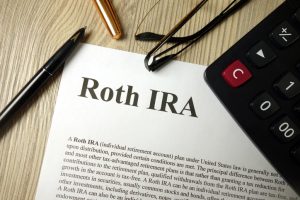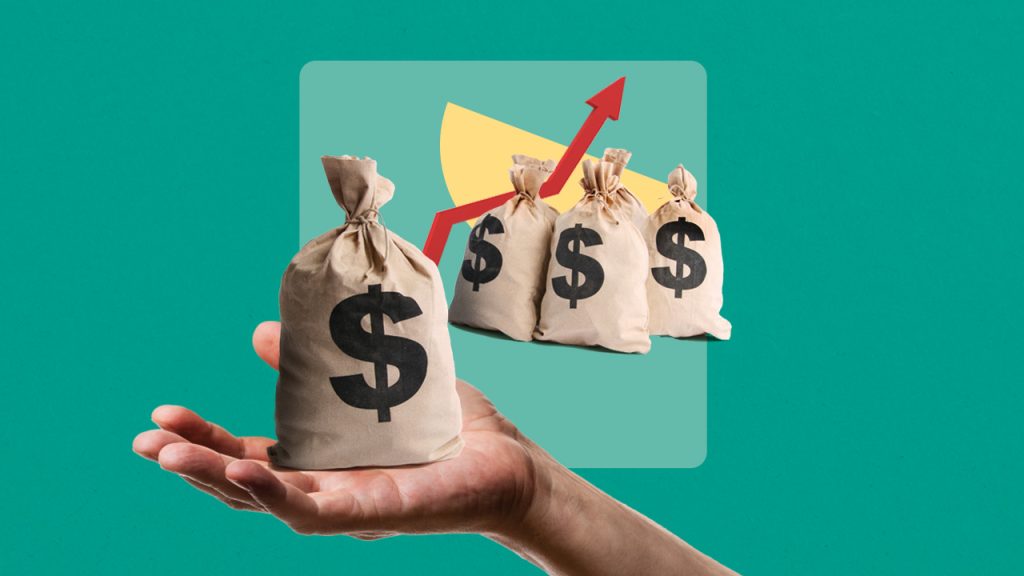Key takeaways
- Unsecured loans aren’t backed by collateral, making them a higher risk for lenders
- Unsecured business loan rates vary, ranging from 7 percent to 75 percent APR
- With good credit, you could secure a low interest rate on an unsecured loan — between 7 percent and 8 percent APR
Interest rates on unsecured business loans can range anywhere from 7 percent to 75 percent APR, depending on the type of loan you choose, the lender and your business’s credit profile. It’s possible to get low interest rates on an unsecured business loan, such as 7 percent to 8 percent APR if your business has good credit.
But lenders typically offer higher rates for unsecured versus secured business loans since unsecured loans aren’t backed by collateral. These loans pose a higher risk to lenders because they can’t immediately seize business assets to repay the loan in case of default.
Below, you’ll find current unsecured business loan rates for different unsecured business loans and what to look for when comparing loans.
Understanding business loan costs
The cost of a business loan is directly affected by interest rates as well as how much you borrow and the time you take to repay. The higher the interest rate, the more you’ll pay to borrow that money.
Lenders charge interest rates in different ways, but an annual percentage rate is the most common and most accurate picture of the total cost. Types of interest rates lenders use:
- Annual percentage rate. The APR uses a percentage to calculate the interest on the loan amount agreed upon. It incorporates fees into its calculation, so the APR might be a little higher than the interest rate in your loan agreement.
- Simple interest. Some lenders charge a simple interest rate, which means that it shows the interest rate you’ll pay without incorporating fees. The actual cost of thhe loan will be higher than this rate.
- Monthly or weekly fee. In some cases, the lender will charge a flat fee or percentage of your outstanding balance either weekly or monthly.
- Factor rate. This rate uses a decimal like 1.10 or 1.40 rather than a percentage. The decimal gets multiplied by the entire loan amount at the beginning of the loan. Factor rates often convert to high interest rates. Make sure you understand the total loan cost before signing for a loan with factor rates.
Fixed vs. variable interest rates
Unsecured business loans can come with either fixed or variable interest rates. Fixed rates keep the interest rate the same the entire length of your loan. This type of rate helps with budgeting since the cost doesn’t change over time.
However, variable interest rates often start out with lower rates upfront than fixed rates. The downside is that they can rise at any time at the lender’s discretion, usually as the market changes.
Current unsecured business loan interest rates
Consult this chart for a better idea of the interest rates you’ll find based on the type of unsecured business loan and lender.
| Loan type | Average interest rates |
| Term loans | Bank: average 7.33 % to 7.99 % APR Online lender: 9.00% to 75.00% APR |
| Business lines of credit | Bank: average 7.25% to 8.17 % APR Online lender: 6.00% to 57 .00% APR |
| Business credit cards | 18.50% to 30.00 % APR |
| SBA loans | Fixed rate: 12.50% to 15.50% Variable rate: 10.50% to 14.00% |
| Invoice factoring | 0.5% to 4% factoring fee |
| Merchant cash advances | Factor rate: 1.04 to 1.32 |
Bankrate insight
The Federal Reserve Bank has not yet cut interest rates in 2025. It decided to hold the current rate steady in its last meeting in July.
However, experts are predicting that the Fed will lower interest rates by one or two points sometime this year. The next scheduled meeting will happen in September.
Unsecured term loans
Some unsecured term loans come with either a low loan amount or short repayment terms to offset the risk of not having business assets tied to the loan.
Since features differ among lenders, compare the unsecured business loan interest rates and terms that these lenders set.
| Lender | Interest rates | Details |
| Bank of America | From 6.75 0% APR | Loan amounts from $10,000 1- to 5-year terms $150 origination fee |
| Fora Financial | Not stated | Loan amounts from $5,000 to $1.5 million Terms up to 18 months Eligible for additional funding after 60% repaid |
| National Funding | 1.10+ factor rate | Loan amounts from $5,000 to $500,000 18-month terms 1% to 3% origination fee 660 min. credit score |
| PNC Bank | Not disclosed | Loan amounts from $20,000 to $100,000 2- to 5-year terms 1% origination fee |
| Triton Capital | 8.99% to 74.99% APR | Loan amounts from $10,000 to $250,000 6- to 24 -month terms 1% to 2.5% origination fee |
| U.S. Bank | From 8.49% APR | Loan amounts up to $50,000 Terms up to 4 years |
Unsecured business lines of credit
A business line of credit provides a way for businesses to access funding as expenses crop up. The lender sets a credit limit based on the business’s ability to repay, and the business repays any amounts drawn within a set repayment term, like one to two years.
Some banks will set a lower maximum credit limit, like $100,000, for unsecured lines compared to secured lines. Take a look at what traditional banks and online lenders offer for this type of unsecured loan.
| Lender | Interest rates | Details |
| Bank of America | From 9.25 % APR | Credit limits from $10,000 Renews annually No draw fees |
| Bluevine | From 7.80% Simple interest | Credit limit up to $250,000 Up to 12-month repayment term |
| Credibly | 3.00% to 5.00% monthly interest rate | Credit limit up to $300,000 Offered through lending partners May pay an origination fee |
| Fundbox | 4.66% to 8.99% amortized weekly fee | Credit limit from Up to $150,000 12- to 24-week terms Accessible to fair credit and low-income borrowers |
| Lendio | 8.00% to 60.00% | Credit limits from $1,000 to $500,000 6 to 18-month terms Works well for startups and bad credit borrowers |
| PNC Bank | Not stated | Credit limits from $20,000 to $100,000 $175 annual fee |
| Wells Fargo | 9.25% to 12.00% APR | Credit limits from $5,000 to $150,000 SBA line of credit option Annual fee on BusinessLine line of credit |
Business credit cards
Business credit cards offer a solid option for smaller purchases while letting the business owner earn rewards. Perks vary, including cards with no annual fee and the option to earn cash back on qualifying purchases.
Fair and bad credit borrowers can find credit-building options, though most unsecured business credit cards need a strong credit score of 670 or higher.
Invoice factoring
Invoice factoring is an alternative type of business financing that doesn’t require collateral because it’s guaranteed by the business’s future invoices. Instead of interest, factoring companies charge a fee on the entire outstanding invoice amount.
The fee structure may include a time window, such as invoices getting paid within 30 days, before the fees are raised or reassessed.
| Lender | Interest rates | Details |
| Credibly | Not stated | Advances up to 95% of invoice amounts |
| Lendio | 3.00% fee | Advances up to $10 million Terms up to 1 year Works through partner lenders |
| SMB Compass | From 12.00% | Loan amounts from $25,000 to $10 million 6- to 24-month terms Funds in as little as 24 hours |
Merchant cash advances
Merchant cash advances (MCAs) allow your business to get funding based on future credit card sales. Most MCAs assess a factor rate instead of an interest rate, which gets multiplied upfront by the entire amount borrowed.
MCAs are a high-risk type of loan that businesses use if they can’t get funding through a conventional business loan. That’s because merchant cash advances have high approval rates as long as your business has adequate sales volume. Yet since these loans can come with steep interest rates in the triple digits, you may want to only use MCAs in an emergency.
| Lender | Interest rates | Details |
| Credibly | 1.11 factor rate | Loans up to $600,000 3- to 24-month terms |
| Lendio | Not stated | Loans from $5,000 to $2 million Terms up to 3 years Funds in as little as 24 hours |
| Fora Financial | Not stated | Loans from $5,000 to $1.5 million Funds within 24 hours |
| Funderial | From 1.19 factor rate | Loans up to $5 million Terms up to 12 months Accepts any credit score |
Strategies for obtaining the best loan rates
Loan interest rates aren’t set in stone until you sign the loan agreement. Take the time to use these strategies for getting the best loan rates possible.
- Improve your credit score. You can improve your personal and business credit score by making all payments on time for vendors, credit cards and loans. You can also take out trade credit with vendors, which allows you to buy supplies from vendors that you pay for over a few months. These tips help you establish and build your credit score.
- Offer collateral or a general lien on business assets. Lenders tend to offer lower interest rates for secured loans versus unsecured loans. If you have valuable assets you can use to back the loan, the lender may reward you with a lower rate.
- Get multiple quotes. One of the best ways to ensure you’re getting the lowest rate is to prequalify for a loan from multiple lenders. You can then compare the loan features and interest rates to select the best option for your business.
Factors that influence unsecured business loan rates
The exact interest rates you’re given for an unsecured business loan are influenced by:
Lender
You’re more likely to get lower interest rates with a traditional bank than with an online lender. But underwriting may take longer since the bank may need extra time and documentation to verify that your business can repay the loan.
Traditional banks also tend to work with businesses with a top-notch credit history, such as a score of 670 or higher. Online and alternative lenders typically have more flexible eligibility criteria, and may be a good fit if you have a lower credit score closer to 500.
Type of loan
Business lines of credit and term loans offer some of the lowest rates available for unsecured loans, provided you have good credit.
If you go with a business credit card, the starting rates are higher than some business loans. Credit card APRs might be lower than or on par with other loans if you have less-than-perfect credit, especially if the card has a 0 percent APR offer.
Credit score and payment history
The lowest rates are reserved for businesses with good credit, such as a score of 670+. In general, lenders keep tighter requirements for unsecured loans than secured loans to ensure that the loan gets repaid.
Otherwise, you might have to go with a bad credit business loan, which charges higher rates and fees.
Revenue
Your business’s financial statements play a large role in any business loan, but especially an unsecured loan. Lenders will want to see adequate cash flow and low debt, such as a debt-to-income ratio of less than 36 percent.
Lenders may also use the debt service coverage ratio to see how much revenue your business generates above debt repayments. It typically likes to see this ratio at 1.25 or higher, meaning that your revenue is 1.25 times that of your debt repayments.
Business loan fees
Aside from interest rates, you’ll want to account for business loan fees that the lender may charge you. These fees will increase the cost of the loan. Common fees include:
- Origination fee. Usually a percentage of the loan amount like 1 percent or 5 percent, this fee is assessed for the lender processing the loan application.
- Administrative or documentation fee. Some lenders charge these fees to cover administrative costs related to processing the loan.
- Prepayment penalty. This fee is sometimes charged when you pay off the loan early to offset the lender’s loss in interest paid. Not every lender charges this fee, so check your loan agreement before paying off the loan early.
- Draw fee. This fee is a percentage of the amount withdrawn from a business line of credit. It’s usually charged each time you draw funds from the credit line.
- Factor rate. This fee is a decimal that gets multiplied by the entire loan amount instead of using an interest rate. You usually have to pay the entire fee even if you pay off the loan early.
How to compare unsecured business loans
Comparing unsecured business loans is similar to comparing business loans. But a few features may be different for unsecured loans:
- Interest rate. If you were to apply for a secured and unsecured business loan, you’d probably get lower interest rates on the secured loan. That’s because the lender has a guarantee that some or all of the loan will get repaid, even if you default.
- Factor rate. Some unsecured loans charge factor rates instead of interest rates. These can translate into high borrowing costs because they’re applied to risky types of loans and don’t incorporate additional loan fees. You’ll need to convert the factor rate to an interest rate to see how the loan compares.
- Loan amount. Some lenders lower the maximum loan amount available for unsecured loans compared to their secured loan options. This is especially true for traditional banks.
- Repayment terms. Compare the repayment term lengths, such as six months, and the repayment schedule. Some alternative or short-term loans, like merchant cash advances, require daily or weekly repayments. Make sure that the repayment terms and schedule are manageable for your business.
- Additional fees. Additional business loan fees will vary by the type of loan and lender, so make sure you read the loan agreement to understand what you’ll be paying. For example, some lenders charge an origination fee to review the loan application. Business lines of credit may charge a draw fee when you withdraw money from your credit line.
Bankrate insight
To help compare loan options, consider using a business loan calculator. It can help you determine the total loan cost including interest as well as show you how the interest rate and repayment terms affect the cost. Then, you can make an informed decision about how much of a business loan you can afford.
Bottom line
With multiple types of unsecured loans available, interest rates can vary significantly. Unsecured business loan interest rates are generally higher compared to secured loans backed by personal or business assets. Compare offers from multiple lenders and choose a loan with the most favorable rates and terms for your business to get the best deal.
Frequently asked questions
Why we ask for feedback
Your feedback helps us improve our content and services. It takes less than a minute to
complete.
Your responses are anonymous and will only be used for improving our website.
Help us improve our content
Read the full article here









